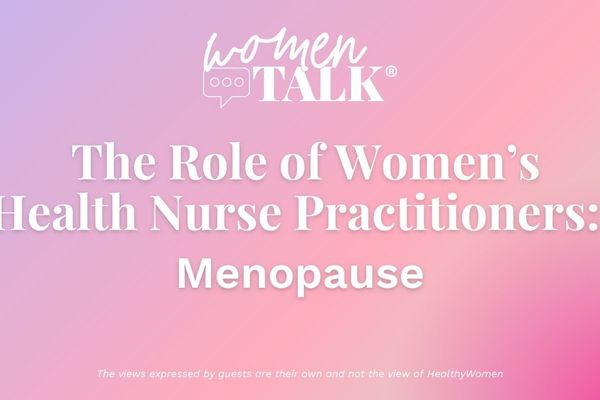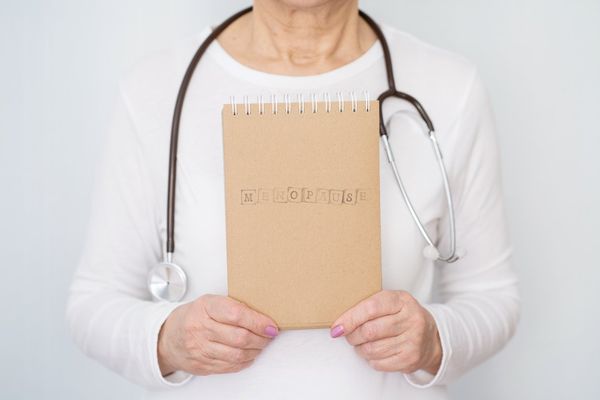I used to think that middle-age spread was something that happened to "other" people. That the words "spread" and "middle age" did not have to be synonymous with one another, just like the words "midlife" and "crisis" didn't have to be.
I thought I'd be one of the lucky ones, since I was a skinny kid.
Wrong: The waistline is simply not what it used to be. Neither is the weight. Especially after menopause.
I thought that by eating less and doing more ab crunches, I could avoid that lovely spare tire.
Wrong again.
The facts.
Estrogen plays a big role in both fat storage and its distribution. Before perimenopause, fat likes to hang out in the thighs, hips and buttocks. But during and after menopause? Fat gets restless and likes to move.
It's favorite spot: the midsection.
And the fat that takes up residence there is different from the fat of your younger years. It's visceral fat, meaning that it lies deep inside your abdomen, surrounding your organs. The "other" kind of fat is subcutaneous fat, which sits right below your skin and is found in places like your thighs, buttocks and outer abdomen.
Visceral fat is more metabolically active and has a negative effect on your body; it's linked to an increase in insulin resistance, diabetes, heart and inflammatory diseases. That extra fat at your waistline also increases your risk of high blood pressure.
Metabolism slows when you age.
Reduced estrogen levels may slow your resting metabolic rate, and your body can't convert stored energy into working energy as efficiently as it once did (hence, the "why-am-I-exercising-more-than-I-ever-had-to-just-to-maintain-my-weight?" question). So, no matter what your past activity levels were, it's probably necessary to increase both the time and intensity.
Pay attention to portion sizes—they matter more than ever before. Base your meals on lean proteins, like chicken and fish, complex carbs (like veggies, fruits and whole grains) and healthful fats (like olive oil, nuts and avocados).
Your muscle mass declines by about half a pound a year as you age, which, in turn, lowers your resting metabolism (as well as your strength and mobility).
But there's a fix for that! Build up muscle, because muscle burns more calories than fat, according to the Mayo Clinic. Resistance training or strength training with weights or resistance bands has been shown to help.
Sleep Matters.
What's sleep got to do with gaining weight? A lot. Too bad so many people suffer sleep problems before and after menopause. Get too little sleep and your metabolism slows. And your hunger hormone, ghrelin, goes on overdrive, increasing food cravings. Another hormone, leptin, gets lower with less sleep—which is not a good thing, because leptin helps you feel satiated (thus the I'm-hungry-all-the-time-must-be-because-I-didn't-get-enough-sleep syndrome).
So Does Stress.
Midlife can be a stressful time—a time of change and upheaval for many of us. And stress can lead to overeating, especially overeating "bad" foods that are high in salt, sugar and fat. Aside from that, the hormone cortisol, which increases with stress, can shift fat accumulation to—guess where?—the belly.
Alas, it's not the crunches that are going to manage your belly fat (although they can strengthen the muscles underneath it). However, losing belly fat as you age is not an impossible task. It can be managed with things like diet, exercise, sleep and stress management.
More Reading:
Why We All Need to Strength Train
Is Menopause Playing Havoc With Your Sleep?
Five Easy Ways to Lose Weight Without Really Trying
- 7 Ridiculously Simple and Realistic Ways to Lose Weight After 50 - HealthyWomen ›
- Butt Shaping Exercises You Can Do at Home - HealthyWomen ›
- Butt Shaping Exercises You Can Do at Home - HealthyWomen ›
- Women in the Middle - HealthyWomen ›
- What Every Woman Needs to Know About Aging Healthfully - HealthyWomen ›







